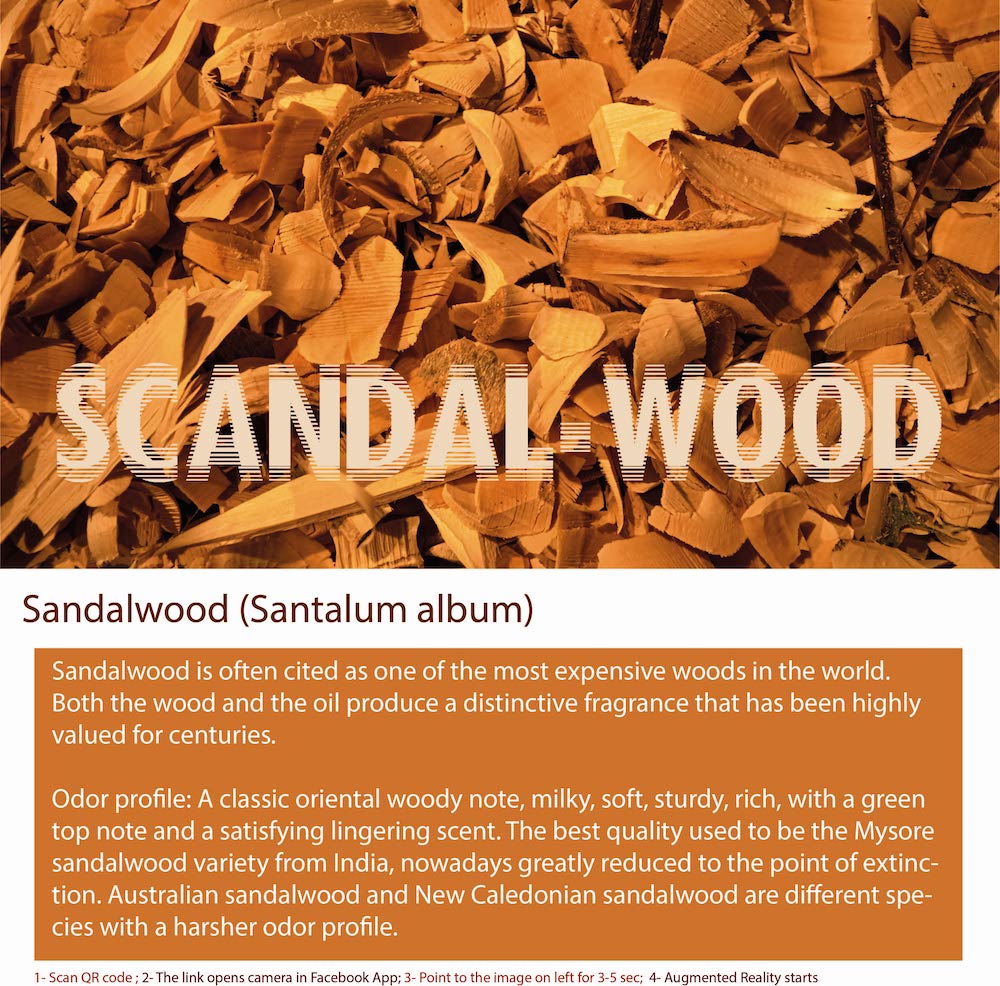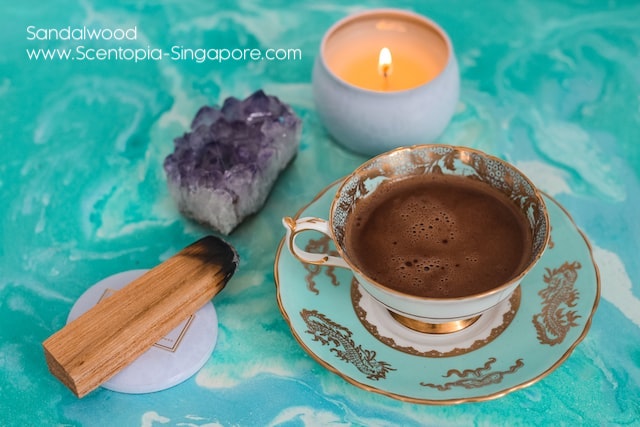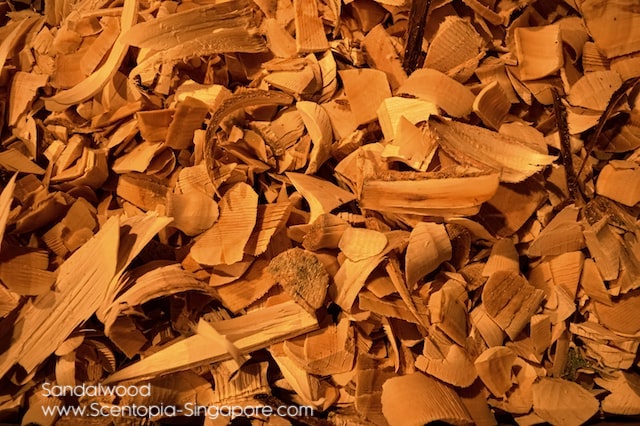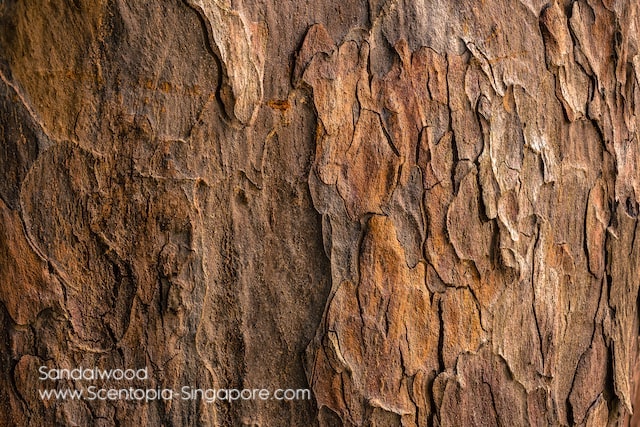Elevate Your Senses with Sandalwood Aromatherapy
Sandalwood: The Fragrant Wood of Perfumes, Healing, and Spiritual Significance
Introduction: Sandalwood, with its exotic aroma and versatile uses, is a fragrant wood celebrated for its presence in perfumes, therapeutic oils, and spiritual practices. Scientifically known as Santalum, sandalwood is a fragrant tree that belongs to the Santalaceae family. For centuries, this prized wood has been cherished by cultures around the world for its soothing fragrance, potential therapeutic properties, and spiritual significance. This essay delves into the captivating world of sandalwood, encompassing its presence in perfumes, therapeutic oils, medicinal systems, historical significance, and intriguing fun facts about this extraordinary and cherished wood.
The Aroma of Sandalwood: Sandalwood is renowned for its rich, woody, and exotic fragrance, which is both calming and grounding. It plays a vital role in perfumery and is often used in aromatherapy to promote relaxation and enhance spiritual practices.
Perfumes and Fragrance: Sandalwood's captivating fragrance has inspired perfumers to create scents that capture the essence of this delightful wood. Sandalwood-inspired perfumes often evoke feelings of tranquility, sensuality, and spirituality, making them sought-after choices for those seeking a sense of inner peace.
Therapeutic Oils and Aromatherapy: Sandalwood essential oil is one of the most prized and expensive essential oils. Its aroma is believed to reduce stress, improve focus, and support meditation and spiritual practices. The oil is extracted from the heartwood of the sandalwood tree.
Medicinal Applications: Sandalwood has a long history of use in traditional medicine systems, particularly in Ayurveda and traditional Chinese medicine. It is believed to have potential benefits for skin care, respiratory health, and relaxation.
Spiritual and Cultural Significance: Sandalwood holds immense spiritual and cultural significance in various traditions. It is often used in religious rituals, ceremonies, and meditation practices to enhance spiritual connections and create a sense of calmness.
Historical Significance: Sandalwood has a rich history dating back to ancient civilizations. It was highly valued and traded as a luxury item in various cultures, and its use in perfumes, incense, and spiritual practices dates back thousands of years.
Fun and Crazy Facts:
Sandalwood, with its exotic allure and potential wellness benefits, is a cherished and sought-after wood that continues to captivate and inspire with its soothing fragrance and spiritual significance. From its use in perfumes to its potential benefits in aromatherapy and traditional medicine, sandalwood offers a wealth of enjoyment and historical significance. As we savor the rich aroma and grounding fragrance of sandalwood and explore its cultural and spiritual significance, we are reminded of the enduring appeal and timeless charm of this extraordinary wood that has enriched our perfumery, spiritual practices, and healing traditions with its unique beauty and calming presence.
Introduction: Sandalwood, with its exotic aroma and versatile uses, is a fragrant wood celebrated for its presence in perfumes, therapeutic oils, and spiritual practices. Scientifically known as Santalum, sandalwood is a fragrant tree that belongs to the Santalaceae family. For centuries, this prized wood has been cherished by cultures around the world for its soothing fragrance, potential therapeutic properties, and spiritual significance. This essay delves into the captivating world of sandalwood, encompassing its presence in perfumes, therapeutic oils, medicinal systems, historical significance, and intriguing fun facts about this extraordinary and cherished wood.
The Aroma of Sandalwood: Sandalwood is renowned for its rich, woody, and exotic fragrance, which is both calming and grounding. It plays a vital role in perfumery and is often used in aromatherapy to promote relaxation and enhance spiritual practices.
Perfumes and Fragrance: Sandalwood's captivating fragrance has inspired perfumers to create scents that capture the essence of this delightful wood. Sandalwood-inspired perfumes often evoke feelings of tranquility, sensuality, and spirituality, making them sought-after choices for those seeking a sense of inner peace.
Therapeutic Oils and Aromatherapy: Sandalwood essential oil is one of the most prized and expensive essential oils. Its aroma is believed to reduce stress, improve focus, and support meditation and spiritual practices. The oil is extracted from the heartwood of the sandalwood tree.
Medicinal Applications: Sandalwood has a long history of use in traditional medicine systems, particularly in Ayurveda and traditional Chinese medicine. It is believed to have potential benefits for skin care, respiratory health, and relaxation.
Spiritual and Cultural Significance: Sandalwood holds immense spiritual and cultural significance in various traditions. It is often used in religious rituals, ceremonies, and meditation practices to enhance spiritual connections and create a sense of calmness.
Historical Significance: Sandalwood has a rich history dating back to ancient civilizations. It was highly valued and traded as a luxury item in various cultures, and its use in perfumes, incense, and spiritual practices dates back thousands of years.
Fun and Crazy Facts:
- Sandalwood's Slow Growth: Sandalwood trees take many years to reach maturity and produce fragrant heartwood, making them a precious and valuable resource.
- Sandalwood Smuggling: Due to its high value, sandalwood has been subject to illegal logging and smuggling, leading to conservation efforts to protect these rare trees.
- Sandalwood in Incense: Sandalwood is a popular ingredient in incense sticks used in various spiritual practices and meditation.
- Traditional Sandalwood Pastes: In some cultures, sandalwood paste is used as a cooling and soothing facial mask, believed to promote radiant skin.
- Sandalwood Tree Conservation: Efforts are underway to conserve and sustainably harvest sandalwood to protect this valuable natural resource.
Sandalwood, with its exotic allure and potential wellness benefits, is a cherished and sought-after wood that continues to captivate and inspire with its soothing fragrance and spiritual significance. From its use in perfumes to its potential benefits in aromatherapy and traditional medicine, sandalwood offers a wealth of enjoyment and historical significance. As we savor the rich aroma and grounding fragrance of sandalwood and explore its cultural and spiritual significance, we are reminded of the enduring appeal and timeless charm of this extraordinary wood that has enriched our perfumery, spiritual practices, and healing traditions with its unique beauty and calming presence.
To experience augmented reality, please open the Facebook-app using QR code and point to the image below
Create a Serene Atmosphere for Meditation
Sandalwood is a tropical tree species native to India and Indonesia, known for its fragrant wood and essential oil. The wood of the sandalwood tree has been used for centuries in traditional medicine and perfumery, and is highly valued for its warm, sweet, and woody scent.
Here are some key points about sandalwood:
Sandalwood has a long history of use in Singapore, where it has been used for both medicinal and cultural purposes. Here are some key points about sandalwood in Singapore:
Here are some key points about sandalwood:
- Uses: Sandalwood is used in a wide range of products, including perfumes, soaps, candles, incense sticks, and personal care products. It is also used in traditional medicine practices such as Ayurveda, where it is believed to have a calming and grounding effect.
- Chemical composition: The essential oil of sandalwood is composed of a complex mixture of compounds, including sesquiterpenes, alcohols, and benzene derivatives. The specific chemical composition of the oil can vary depending on factors such as the species of sandalwood, the region in which it was grown, and the method of extraction.
- Scent profile: Sandalwood is known for its warm, sweet, and woody scent, which is often described as having a creamy, balsamic quality. The scent of sandalwood is used to add depth and complexity to perfumes, and is valued for its ability to blend well with a wide range of other fragrance ingredients.
- Harvesting and sustainability: Sandalwood trees take many years to mature and produce essential oil, and the high demand for sandalwood has led to over-harvesting and deforestation in some regions. To ensure the sustainability of sandalwood resources, many countries have introduced regulations on sandalwood harvesting and trade.
Sandalwood has a long history of use in Singapore, where it has been used for both medicinal and cultural purposes. Here are some key points about sandalwood in Singapore:
- Cultural significance: Sandalwood is considered a sacred material in many Asian cultures, including Singapore, where it is often used in traditional rituals and ceremonies. The wood is also used to make religious objects and offerings.
- Perfumery: Sandalwood is widely used in perfumery in Singapore, where it is valued for its warm, sweet, and woody scent. The essential oil is used in a variety of perfumes, personal care products, and home fragrances.
- Traditional medicine: In traditional medicine practices such as Ayurveda, sandalwood is believed to have a calming and grounding effect, and is used to treat a range of conditions, including skin problems, respiratory problems, and digestive issues.
Experience Tranquility with Wood Incense Sticks
Sandalwood has been used in a variety of cultural, religious, and mythological contexts throughout history. Here are some key points about sandalwood in art, literature, mythology, religion, and culture:
- Religious and spiritual significance: Sandalwood is considered a sacred material in many cultures, including Hinduism, Buddhism, and Jainism, where it is used in religious rituals and ceremonies, and as an offering to the gods. The sweet fragrance of sandalwood is believed to evoke a spiritual and contemplative state of mind.
- Mythology: In ancient Hindu mythology, sandalwood is associated with the Hindu god Vishnu and is believed to have protective and purifying properties. It is also said to have the power to attract good luck and wealth.
- Literature: Sandalwood has been mentioned in a variety of literary works throughout history, including poems, plays, and novels, where it is often used to evoke a sense of luxury and sensuality.
- Art: Sandalwood has been used in art in a variety of forms, including as a pigment, a carving material, and as a fragrant component in perfumes. The wood is also used to make religious objects and offerings, such as statues of gods and goddesses.
- Perfumery: Sandalwood is widely used in perfumery, where it is valued for its warm, sweet, and woody scent. The essential oil is used in a variety of perfumes, personal care products, and home fragrances, and is considered a classic and versatile fragrance ingredient.
Discover Natural Home Fragrances at Scentopia
Sandalwood has been used in traditional medicine for centuries and is believed to have therapeutic properties. Here are some of the key therapeutic benefits associated with sandalwood:
Overall, sandalwood has a long history of use in traditional medicine and is believed to have a range of therapeutic benefits, including relaxation, skin health, respiratory health, digestive health, and immune system support.
- Relaxation: Sandalwood is believed to have a calming and grounding effect, which can help to relieve stress, anxiety, and promote relaxation.
- Skin health: Sandalwood oil is often used in skincare products due to its anti-inflammatory and antimicrobial properties, which can help to soothe and protect the skin, and treat a variety of skin conditions, including acne and eczema.
- Respiratory health: Sandalwood is believed to have expectorant properties, which can help to clear the respiratory tract, and relieve symptoms of conditions such as colds, flu, and bronchitis.
- Digestive health: Sandalwood is believed to have digestive properties, which can help to soothe digestive issues, such as stomach discomfort, indigestion, and bloating.
- Immune system: Sandalwood is believed to have antimicrobial and immune-boosting properties, which can help to protect against infections and support the immune system.
Overall, sandalwood has a long history of use in traditional medicine and is believed to have a range of therapeutic benefits, including relaxation, skin health, respiratory health, digestive health, and immune system support.
Unwind and Relax with Calming Scents
The sandalwood scent profile is characterized by a warm, woody, and slightly sweet aroma. It is often described as earthy, rich, and soft, with a hint of spice. Sandalwood essential oil has a long-lasting, sweet and woody aroma that is often used in perfumes, incense, and aromatherapy. The scent of sandalwood is believed to be grounding and relaxing, which can help to promote calmness and a sense of well-being.
The chemical composition of sandalwood essential oil varies depending on the species of sandalwood, growing conditions, and processing methods used. However, the main constituents of sandalwood oil that contribute to its scent profile include::
The chemical composition of sandalwood essential oil varies depending on the species of sandalwood, growing conditions, and processing methods used. However, the main constituents of sandalwood oil that contribute to its scent profile include::
- Santalol: A primary component of sandalwood essential oil that gives the oil its sweet and woody aroma.
- Sandalwood Ester: A sweet and floral aroma that adds to the overall scent of sandalwood oil.
- Alpha-Santalol: A warm and woody aroma that gives sandalwood oil its characteristic scent.
- Beta-Santalol: A woody aroma that contributes to the overall scent of sandalwood oil.
- Tricyclic Santalols: A group of compounds that give sandalwood oil its warm, woody aroma.
- Overall, the scent profile of sandalwood is influenced by a complex mixture of organic compounds, including santalols, sandalwood ester, alpha-santalol, beta-santalol, tricyclic santalols, terpenoids, and alcohols.
- Terpenoids: A group of volatile organic compounds that contribute to the overall scent of sandalwood oil.
- Alcohols: A group of organic compounds that contribute to the overall scent of sandalwood oil.
Transform Your Space with Calming Wood Fragrances
Some famous sandalwood perfumes include:
- Le Labo Santal 33: A popular sandalwood-based perfume that features a rich and woody aroma.
- Tom Ford's Santal Blush: A warm, woody scent that features sandalwood, cardamom, and tonka bean.
- Jo Malone's Wood Sage & Sea Salt: A light and fresh perfume that features sandalwood, sea salt, and sage.
- Diptyque's Tam Dao: A warm and woody scent that features sandalwood, cedar, and rosewood.
- Byredo's Bal d'Afrique: A fresh and floral scent that features sandalwood, neroli, and African marigold.
Join Scentopia, Sentosa's latest tourist attraction wonderful orchid scent crafting, fragrance tour, bridal shower or corporate team building which includes perfume making onsite and offsite, beach activities and more. We also serve primary school learning journey, secondary students and pupil on industrial excursions. Know more about our orchids perfume bar or therapeutic orchid scents and other wellness aromas. Conatct Perfume workshop or book a scent crafting session here.






